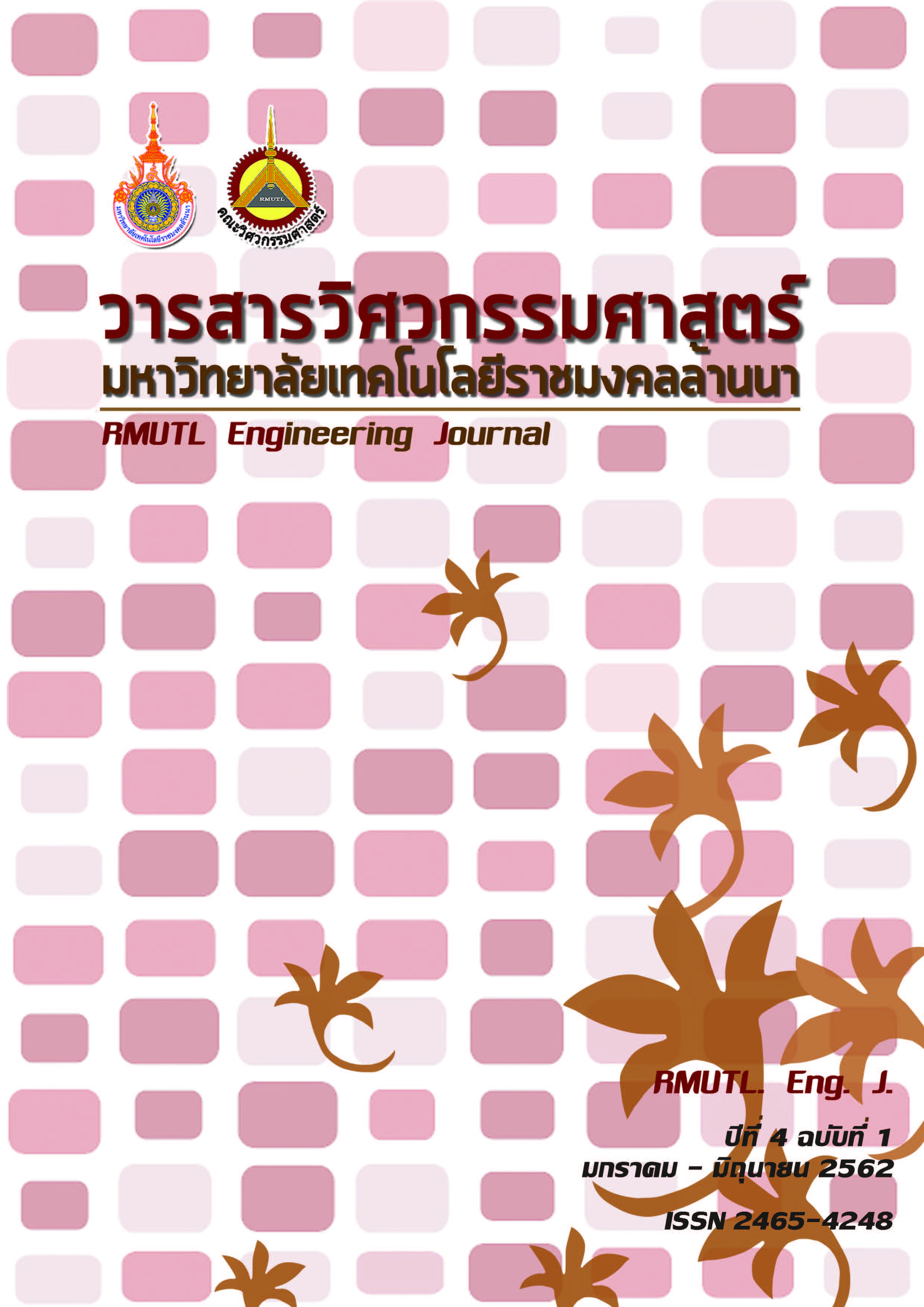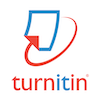Development of Adobe Bricks mixed with Banana Leaves Fiber and Coir as Construction Materials for Earthen House
DOI:
https://doi.org/10.14456/rmutlengj.2019.2Keywords:
adobe bricks, coir, banana leaves fiber, earthen house, agricultural materialsAbstract
The purpose of this research is to develop the adobe bricks mixed with the agricultural materials which are the banana leaves fiber and the coir. The proportion of the soil and sand was controlled at 85:15 and the water proportion was 20% by dry weight of the soil-sand mixture. This research used the agricultural materials to replace the soil-sand mixture at the ratio of 0, 3, 5, 8 and 10% by dry weight. The samples were dried in the sun for 20 days and then they were tested for their compressive strength, flexural strength, density, and drying shrinkage. These properties were compared to that of the adobe bricks containing rice husk made by the Sufficiency Economy Learning Center, Khao Kling Temporary Prison. According to the test results, the appropriated proportion of the agricultural mixture is banana leaves fiber of 3%. The density of the adobe brick is close to that made by the Sufficiency Economy Learning Center, Khao Kling Temporary Prison. The compressive strength and the flexural strength increase by 8.02% and 50%, respectively. Therefore, they can use to substitute the adobe bricks made by the Sufficiency Economy Learning Center, Khao Kling Temporary Prison and use as a building material for earth houses.
References
[2] Benghida D. Adobe bricks: the besteco-friendly building material. Advanced Materials Research. 2015;1005:386-390.
[3] Lertwattanaruk P, Tungsirisakul J. Effect of natural materials on properties of adobe brick for earth construction. Journal of Architectural/Planning Research and Studies. 2007;5(1):187-199.
[4] Lertwattanaruk P, Choksiriwanna J. The physical and thermal properties of adobe brick containing bagasse for earth construction. Built. 2011;1(1):54-61.
[5] เสริมชัย กรตระกูล. บ้านดินล้ำยุค. กรุงเทพมหานคร:พงษ์สาส์น; 2554.
[6] จตุพร ตั้งศิริสกุล. การประยุกต์ใช้วัตถุดิบทางธรรมชาติในการเพิ่มประสิทธิภาพของก้อนอิฐดินดิบเพื่อใช้ในการก่อสร้างบ้านดิน. [วิทยานิพนธ์ปริญญาสถาปัตยกรรม ศาสตรมหาบัณฑิต]. สาขาวิชาสถาปัตยกรรม คณะสถาปัตยกรรมศาสตร์และการผังเมือง. กรุงเทพมหานคร: มหาวิทยาลัยธรรมศาสตร์; 2550.
[7] เสน่ห์ รัตนปัญญาเจริญ, ชัยวัฒน์ ตั้งใจ และฤกษ์ชัย สว่างสินธุ์. การศึกษาคุณสมบัติเชิงกลของอิฐดินดิบผสมหญ้าแฝกและฟางข้าวเพื่อเป็นวัสดุก่อสร้างบ้านต้นทุนต่ำ. [ปริญญานิพนธ์วิศวกรรมศาสตรบัณฑิต]. สาขาวิศวกรรมโยธา คณะวิศวกรรมศาสตร์. พิษณุโลก: มหาวิทยาลัยนเรศวร; 2550.
[8] ทรงกลด ศรีวัฒนวรัญญู. การพัฒนาอิฐดินดิบผสมหญ้าแฝกเพื่อเป็นวัสดุก่อสร้างบ้านต้นทุนต่ำ. [วิทยานิพนธ์วิศวกรรมศาสตรมหาบัณฑิต]. สาขาวิศวกรรมโยธา คณะวิศวกรรมศาสตร์. พิษณุโลก: มหาวิทยาลัยนเรศวร; 2551.
[9] จรุญศรี โชคศิริวรรณา. คุณสมบัติทางกายภาพและ ความร้อนของก้อนอิฐดินดิบผสมกากอ้อยเพื่อการก่อสร้างบ้านดิน. [วิทยานิพนธ์ปริญญาสถาปัตยกรรม ศาสตรมหาบัณฑิต]. สาขาวิชาสถาปัตยกรรม คณะสถาปัตยกรรมศาสตร์และการผังเมือง. กรุงเทพมหานคร: มหาวิทยาลัยธรรมศาสตร์; 2553.
[10] Hyeng CB, Bell EY. Mechanical properties of sustainable adobe bricks stabilized with recycled sugarcane fiber waste. Int. Journal of Engineering Research and Application. 2016;6(9):50-59.
[11] Begum R, Habib A, Begum HA. Adobe bricks stabilized with cement and natural rubber latex. Int. Journal of Emerging Science and Engineering. 2014;2(4):36-38.
[12] American Society for Testing and Materials. ASTM C67 Standard Test Methods For Sampling and Testing Brick and Structural Clay Tile. Annual Book of ASTM Standards; 2011.
[13] American Society for Testing and Materials. ASTM C138 Standard Test Method for density(unit weight) yield and air content (gravimetric) of concrete. Annual Book of ASTM Standards; 2012.
[14] พุฒิพัทธ์ ราชคำ และธีรวัฒน์ สินศิริ. การศึกษาคุณสมบัติของอิฐดินเหนียวมวลเบาผสมเถ้าลอยและแคลเซียมไฮดรอกไซด์. วารสารวิชาการ วิศวกรรมศาสตร์ ม.อบ. 2559;9(1):70-82.
[15] กรมส่งเสริมการอนุรักษ์พลังงาน. เปรียบเทียบคุณสมบัติของวัสดุอุตสาหกรรม 10 ชนิด. [เข้าถึงเมื่อ 1 สิงหาคม 2561]. ที่มา: www2.dede.go.th/newomesafe/webban/book/material%20table.htm.










